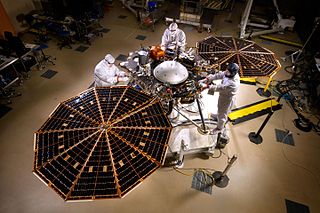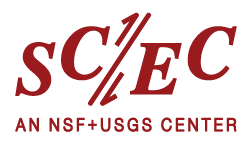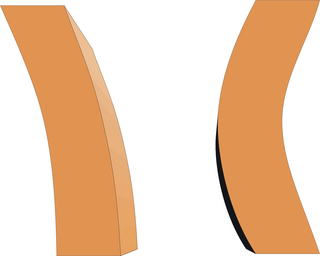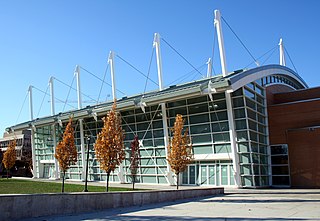
Engineering is the application of knowledge in the form of science, mathematics, and empirical evidence, to the innovation, design, construction, operation and maintenance of structures, machines, materials, devices, systems, processes, and organizations. The discipline of engineering encompasses a broad range of more specialized fields of engineering, each with a more specific emphasis on particular areas of applied mathematics, applied science, and types of application. See glossary of engineering.

Engineers, as practitioners of engineering, are professionals who invent, design, analyze, build, and test machines, systems, structures and materials to fulfill objectives and requirements while considering the limitations imposed by practicality, regulation, safety, and cost. The word engineer is derived from the Latin words ingeniare and ingenium ("cleverness"). The foundational qualifications of an engineer typically include a four-year bachelor's degree in an engineering discipline, or in some jurisdictions, a master's degree in an engineering discipline plus four to six years of peer-reviewed professional practice and passage of engineering board examinations.

A software engineer is a person who applies the principles of software engineering to the design, development, maintenance, testing, and evaluation of computer software.

A building code is a set of rules that specify the standards for constructed objects such as buildings and nonbuilding structures. Buildings must conform to the code to obtain planning permission, usually from a local council. The main purpose of building codes is to protect public health, safety and general welfare as they relate to the construction and occupancy of buildings and structures. The building code becomes law of a particular jurisdiction when formally enacted by the appropriate governmental or private authority.

Soil liquefaction occurs when a saturated or partially saturated soil substantially loses strength and stiffness in response to an applied stress such as shaking during an earthquake or other sudden change in stress condition, in which material that is ordinarily a solid behaves like a liquid.

The 1971 San Fernando earthquake occurred in the early morning of February 9 in the foothills of the San Gabriel Mountains in southern California. The unanticipated thrust earthquake had a magnitude of 6.5 on the Ms scale, and a maximum Mercalli intensity of XI (Extreme). The event was one in a series that affected the Los Angeles area in the late 20th century. Damage was locally severe in the northern San Fernando Valley and surface faulting was extensive to the south of the epicenter in the mountains, as well as urban settings along city streets and neighborhoods. Uplift and other effects affected private homes and businesses.

The Southern California Earthquake Center (SCEC) is a consortium of fifteen research institutions with a mission to gather new information about earthquakes in Southern California, integrate such information into a comprehensive and predictive understanding of earthquake phenomena, and communicate this understanding to end-users in the earthquake engineering profession and the general public in order to increase earthquake awareness, reduce economic losses, and save lives. Its headquarters are at the University of Southern California.

Seismic retrofitting is the modification of existing structures to make them more resistant to seismic activity, ground motion, or soil failure due to earthquakes. With better understanding of seismic demand on structures and with our recent experiences with large earthquakes near urban centers, the need of seismic retrofitting is well acknowledged. Prior to the introduction of modern seismic codes in the late 1960s for developed countries and late 1970s for many other parts of the world, many structures were designed without adequate detailing and reinforcement for seismic protection. In view of the imminent problem, various research work has been carried out. State-of-the-art technical guidelines for seismic assessment, retrofit and rehabilitation have been published around the world – such as the ASCE-SEI 41 and the New Zealand Society for Earthquake Engineering (NZSEE)'s guidelines. These codes must be regularly updated; the 1994 Northridge earthquake brought to light the brittleness of welded steel frames, for example.

Seismic analysis is a subset of structural analysis and is the calculation of the response of a building structure to earthquakes. It is part of the process of structural design, earthquake engineering or structural assessment and retrofit in regions where earthquakes are prevalent.

Earthquake engineering is an interdisciplinary branch of engineering that designs and analyzes structures, such as buildings and bridges, with earthquakes in mind. Its overall goal is to make such structures more resistant to earthquakes. An earthquake engineer aims to construct structures that will not be damaged in minor shaking and will avoid serious damage or collapse in a major earthquake. Earthquake engineering is the scientific field concerned with protecting society, the natural environment, and the man-made environment from earthquakes by limiting the seismic risk to socio-economically acceptable levels. Traditionally, it has been narrowly defined as the study of the behavior of structures and geo-structures subject to seismic loading; it is considered as a subset of structural engineering, geotechnical engineering, mechanical engineering, chemical engineering, applied physics, etc. However, the tremendous costs experienced in recent earthquakes have led to an expansion of its scope to encompass disciplines from the wider field of civil engineering, mechanical engineering and from the social sciences, especially sociology, political science, economics and finance.
Henry J. Degenkolb was a structural engineer in San Francisco, California, noted for his many contributions to earthquake engineering.
A Building Engineer is recognised as being expert in the use of technology in the design, construction, assessment and maintenance of the built environment. Commercial Building Engineers are concerned with the planning, design, construction, operation, renovation, and maintenance of buildings, as well as with their impacts on the surrounding environment.

National Center for Research on Earthquake Engineering is an organisation found in Taipei, Taiwan. Since Taiwan is located on the ridge of the Eurasian and Philippine tectonic plates, it is highly seismic. The biggest earthquake in Taiwan in more than a century was 21 September 1999, also known as the Chi-Chi earthquake which measured 7.3 on the Richter scale.
Earthquake-resistant structures are structures designed to protect buildings from earthquakes. While no structure can be entirely immune to damage from earthquakes, the goal of earthquake-resistant construction is to erect structures that fare better during seismic activity than their conventional counterparts. According to building codes, earthquake-resistant structures are intended to withstand the largest earthquake of a certain probability that is likely to occur at their location.This means the loss of life should be minimized by preventing collapse of the buildings for rare earthquakes while the loss of the functionality should be limited for more frequent ones.

Architectural Engineering, also known as Building Engineering or Architecture Engineering, is the application of engineering principles and technology to building design and construction. Definitions of an architectural engineer may refer to:

The Earthquake Engineering Research Institute (EERI) is a leading technical society in dissemination of earthquake risk and earthquake engineering research both in the U.S. and globally. EERI members include researchers, geologists, geotechnical engineers, educators, government officials, and building code regulators. Their mission, as stated in their 5-year plan published in 2006, has three points: "Advancing the science and practice of earthquake engineering; Improving understanding of the impact of earthquakes on the physical, social, economic, political, and cultural environment; and Advocating comprehensive and realistic measures for reducing the harmful effects of earthquakes".
The Structural Engineers Association of Northern California (SEAONC) is a structural engineering association established in 1930. Its headquarters are in San Francisco, California. Initially a club for structural engineers to exchange technical information, it evolved into a professional organization advising on the development of building code requirements and California legislation related to earthquake hazard reduction such as the Field Act and Alquist Priolo Special Studies Zone Act.

Harry Bolton Seed was an educator, scholar, former Professor at the University of California, Berkeley. He was regarded as the founding father of geotechnical earthquake engineering.
Michel Soto Chalhoub is a civil engineer who pioneered modern practice in shock, vibration, and seismic design using energy dissipating devices [ref]. He developed his methodologies while at the University of California, Berkeley, where he earned his Ph.D. in dynamics and seismic design.
Seismic codes or earthquake codes are building codes designed to protect property and life in buildings in case of earthquakes. The need for such codes is reflected in the saying, "Earthquakes don't kill people—buildings do." Or in expanded version, “Earthquakes do not injure or kill people. Poorly built manmade structures injure and kill people.”














